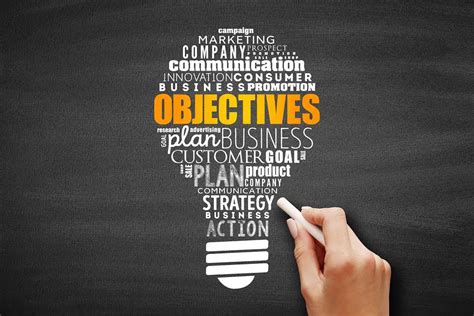Learn how to set clear, measurable goals and actionable objectives using SMART criteria for workshop success. Measure outcomes and improve future sessions.
Understanding the Importance of Clear Goals
Understanding the Importance of Clear Goals
Setting clear goals is essential in any workshop or session, as it provides a sense of direction and purpose for both the facilitator and the participants. Without clear goals, the session can easily veer off track and lose its effectiveness. It is important to clearly define what you hope to achieve by the end of the workshop, whether it’s a specific skill or knowledge that participants should gain, or a particular outcome that they should be able to demonstrate.
Furthermore, clear goals help in keeping everyone focused and motivated throughout the session. When participants know exactly what is expected of them, they are more likely to engage and participate actively. It also gives the facilitator a framework to follow, ensuring that the workshop stays on course and covers all necessary content. Without clear goals, the session may lack structure and coherence, leading to confusion and frustration among the participants.
Additionally, setting clear goals allows for better evaluation and assessment of the workshop’s success. By having specific and measurable objectives in place, it becomes easier to determine whether the session has achieved its intended outcomes. This, in turn, enables the facilitator to make necessary adjustments for future workshops, ensuring continuous improvement and better results in subsequent sessions.
Identifying the Key Objectives
Identifying the key objectives is an essential step in planning and executing a successful workshop. Before diving into the details of your session, it is important to clearly define what you want to achieve. This involves identifying the specific outcomes and results that you hope to accomplish through the workshop. Whether it’s increasing knowledge, changing behavior, or improving skills, the key objectives provide a roadmap for the entire session.
Furthermore, identifying the key objectives helps in setting the direction for the workshop and ensures that the content and activities align with the desired outcomes. By clearly defining the objectives, you can tailor the content and structure of the session to best meet the needs of your audience. This not only enhances the relevance and effectiveness of the workshop, but also increases participant engagement and satisfaction.
In addition, having clearly identified key objectives allows for better measurement and evaluation of the workshop outcomes. By knowing exactly what you are striving to achieve, you can establish specific criteria and metrics to assess the success of the session. This ensures that the workshop remains focused and impactful, with results that can be measured and evaluated against the initial objectives.
Crafting Specific and Measurable Goals
When it comes to setting goals for your workshop or session, it’s important to ensure that they are specific and measurable. Crafting specific and measurable goals allows you to clearly define what you want to achieve and provides a way to track your progress. This not only helps you stay focused on what you want to accomplish, but it also enables you to evaluate the success of your session once it’s complete.
One way to craft specific and measurable goals is to use the SMART criteria. This means making sure your goals are Specific, Measurable, Achievable, Relevant, and Time-bound. By following these guidelines, you can create goals that are clear and attainable, with a set timeframe for completion. For example, instead of setting a vague goal like “Improve participant engagement,” a specific and measurable goal would be “Increase participant engagement by 20% through interactive activities during the workshop.” This allows for a clear target to work towards and a way to measure the outcome.
Another important aspect of crafting specific and measurable goals is to consider the purpose and desired outcomes of your session. What do you hope to achieve? What are the key objectives that align with your goals? By understanding the purpose of your workshop and the desired outcomes, you can tailor your goals to directly contribute to the success of your session. Whether it’s increasing participant knowledge, improving specific skills, or fostering collaboration, your goals should be designed to support these objectives and provide a clear path to measure success.
Developing Actionable Objectives
Developing actionable objectives is a crucial step in ensuring the success of any workshop or session. These objectives should be specific, measurable, and achievable in order to provide a clear direction for the session. When crafting actionable objectives, it’s important to consider the overarching goals of the workshop and how the objectives will contribute to their achievement.
One way to develop actionable objectives is to align them with the needs and interests of the workshop participants. By understanding what the audience hopes to gain from the session, you can tailor the objectives to address their specific concerns and ensure that the content is relevant and engaging. This approach not only makes the objectives more actionable, but also enhances the overall impact of the workshop.
Additionally, implementing the SMART criteria for goal setting can be incredibly useful when developing actionable objectives. This involves ensuring that the objectives are specific, measurable, achievable, relevant, and time-bound, which provides a framework for creating objectives that are clear, focused, and attainable.
Aligning Goals and Objectives with Audience Needs
When you are planning a workshop or training session, it is essential to consider the needs and expectations of your audience. This involves aligning your goals and objectives with what the audience hopes to gain from the session. By understanding their needs, you can tailor your goals and objectives to ensure that the content and activities are relevant and meaningful for the participants. This alignment is crucial for the success of the session, as it helps to engage and motivate the audience.
One way to align goals and objectives with audience needs is to conduct thorough research and analysis of the target audience. This may involve surveys, interviews, or focus groups to gather insights into their preferences, challenges, and learning styles. By understanding the audience’s specific needs, you can set clear goals and objectives that address their concerns and provide relevant solutions. This approach helps to create a workshop that is tailored to the audience, increasing the likelihood of achieving the desired outcomes.
Another important aspect of aligning goals and objectives with audience needs is to continuously gather feedback and evaluate the effectiveness of the session. This ongoing assessment allows you to make necessary adjustments to the goals and objectives to better meet the audience’s needs. By incorporating feedback into the planning process, you can ensure that future sessions are even more aligned with the audience’s needs, leading to improved outcomes and participant satisfaction.
Implementing SMART Criteria for Goals
Implementing SMART Criteria for Goals
Setting goals is an essential part of any workshop or session, but it’s not enough to simply have a goal in mind. In order to ensure that your goals are achievable and effective, it’s important to implement SMART criteria. The SMART criteria stands for Specific, Measurable, Achievable, Relevant, and Time-bound. By using this framework, you can ensure that your goals are well-defined and can be easily tracked and evaluated.
When implementing SMART criteria for your goals, it’s essential to be as specific as possible. This means clearly defining what the goal is and what success looks like. For example, instead of setting a goal to improve communication skills, a SMART goal would be to increase team communication by 20% within the next 3 months. This level of specificity not only helps to clarify the goal, but it also provides a clear target to aim for.
Measurable goals are also a key component of the SMART criteria. By establishing measurable targets, you can track your progress and determine whether or not the goal has been achieved. This might involve setting specific metrics or milestones to track your progress. For example, if your goal is to increase customer satisfaction, you might measure this by tracking the number of positive customer reviews or surveys received. This not only provides a clear benchmark for success, but it also allows you to track your progress over time.
Measuring and Evaluating Workshop Outcomes
When it comes to organizing workshops, it is essential to establish clear goals and objectives beforehand. The success of a workshop can be measured by how well these goals and objectives are achieved. Measuring and evaluating workshop outcomes allows organizers to assess the effectiveness of the session and make improvements for future sessions.
One key aspect of measuring workshop outcomes is to define specific metrics for success. These could include participant satisfaction, the attainment of learning objectives, or the impact of the workshop on the audience. By setting clear criteria for evaluation, organizers can gather relevant data to assess the overall success of the workshop.
Evaluating workshop outcomes also involves the use of feedback forms and surveys to gather insights from participants. This qualitative data can provide valuable information on the strengths and weaknesses of the workshop, allowing organizers to identify areas for improvement. Additionally, quantitative data such as attendance rates and participation levels can also be used to measure the overall impact of the workshop.
Continuous Improvement for Future Sessions
Continuous improvement is an essential aspect of any successful workshop or session. After conducting a workshop, it’s important to reflect on the outcomes and identify areas for improvement. This process involves gathering feedback from participants, assessing the effectiveness of the goals and objectives, and analyzing the overall impact of the session.
One of the key ways to achieve continuous improvement is by implementing a feedback system that allows participants to share their thoughts and suggestions. This could be done through surveys, interviews, or group discussions. By actively seeking input from attendees, workshop organizers can gain valuable insights into what worked well and what could be enhanced in future sessions.
Additionally, it’s important to regularly review and revise the goals and objectives for future workshops. As the needs and expectations of the audience evolve, so should the focus of the sessions. This could involve refining the specificity and measurability of goals, as well as aligning them more closely with the needs of the attendees. By continuously refining and updating the goals and objectives, organizers can ensure that each workshop is tailored to deliver maximum value to the participants.
Frequently Asked Questions
Why is it important to set clear goals and objectives for a workshop?
Setting clear goals and objectives helps to guide the direction of the workshop and ensure that participants understand what is expected of them. It also helps to measure the success of the workshop and keep everyone focused on the desired outcomes.
What are some key elements to consider when setting goals and objectives for a workshop?
Key elements to consider include identifying the target audience, defining the desired outcomes, outlining specific tasks and activities, and establishing a timeline for achieving the goals.
How can facilitators ensure that the goals and objectives are effectively communicated to participants?
Facilitators can effectively communicate goals and objectives by using clear and concise language, providing visual aids or handouts, and engaging participants in discussion to ensure understanding.
What are some common challenges in setting goals and objectives for workshops, and how can they be overcome?
Common challenges include lack of clarity, conflicting goals, and resistance from participants. These challenges can be overcome through open communication, collaboration, and flexibility in adjusting goals as needed.
How can the success of workshop goals and objectives be evaluated?
The success of workshop goals and objectives can be evaluated through participant feedback, observation of participant engagement and outcomes, and comparison against the initial set goals and objectives.
What are the benefits of setting measurable goals and objectives for a workshop?
Setting measurable goals and objectives allows for clear evaluation of success, provides motivation for participants, and helps in making informed decisions for future workshops based on the outcomes.
In what ways can clear goals and objectives contribute to the overall effectiveness of a workshop?
Clear goals and objectives contribute to the overall effectiveness of a workshop by keeping participants focused, ensuring efficient use of time and resources, and providing a framework for delivering valuable learning experiences.





